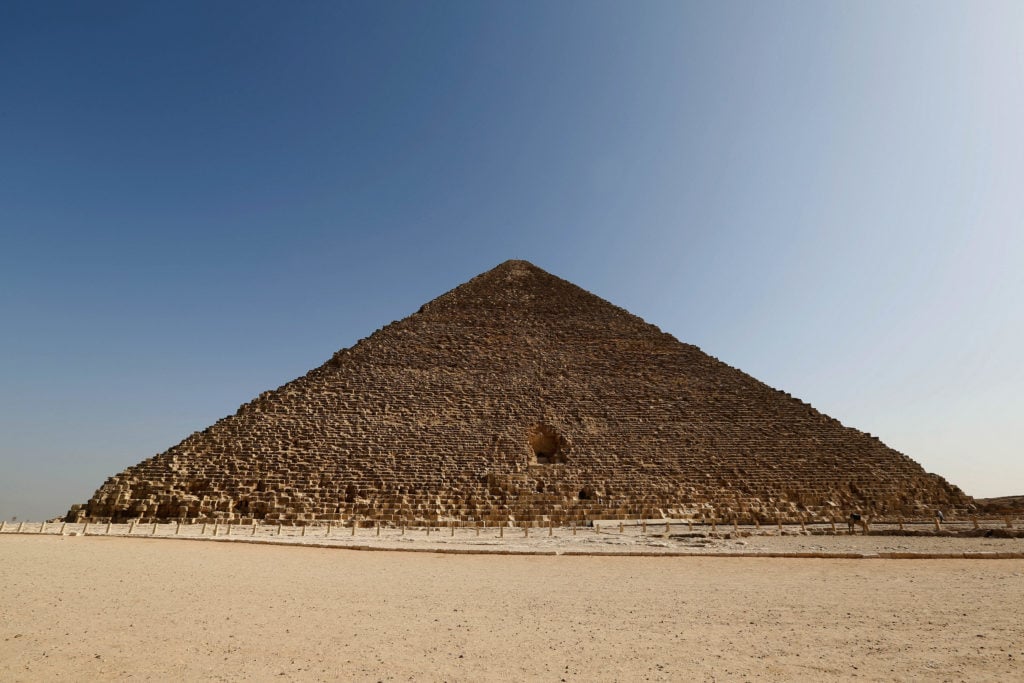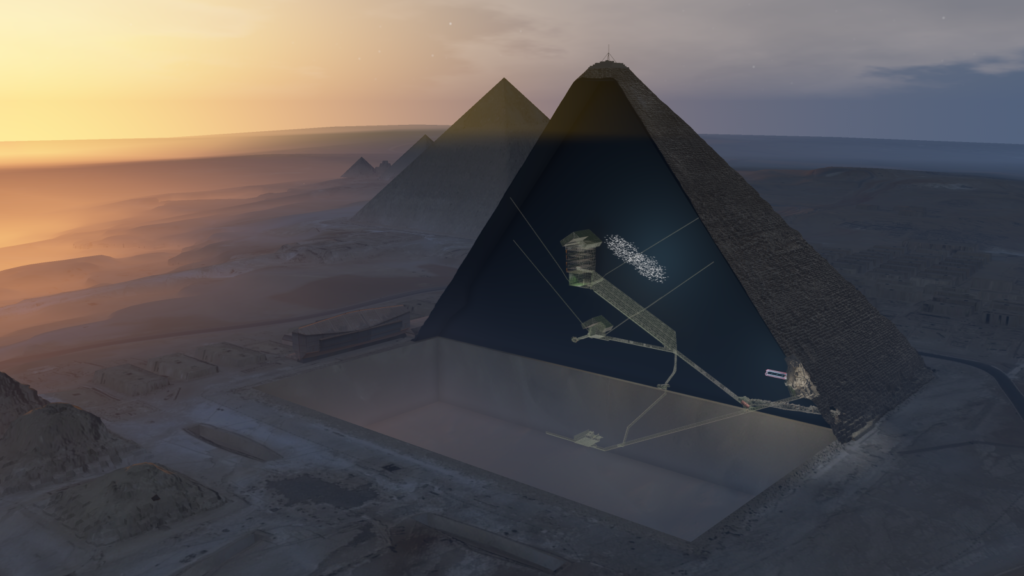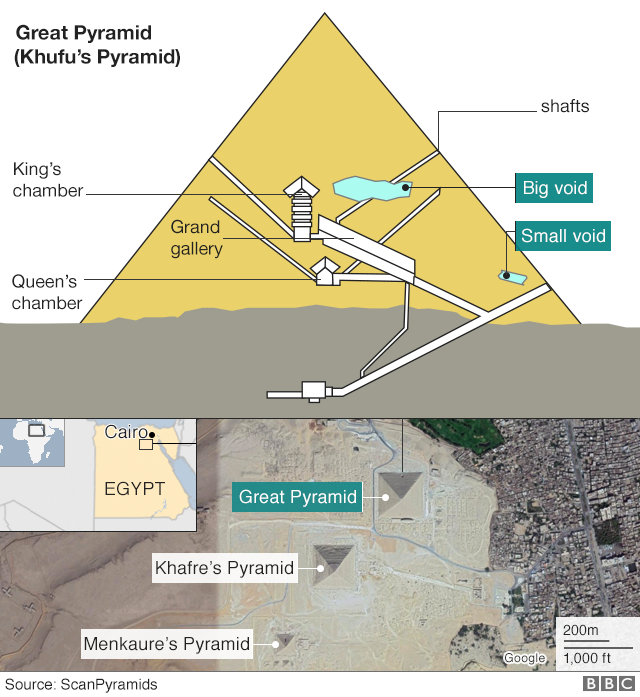Art World
Into the Void: Scientists Have Discovered a Secret Room in the Great Pyramid of Giza
The intriguing void measures 100 feet long.

The intriguing void measures 100 feet long.

Sarah Cascone

Thousands of years after it was built, the Great Pyramid of Giza continues to captivate the imagination of people the world over, and we’re still uncovering its mysteries. Now, thanks to advances in particle physics, scientists have discovered a massive void hidden inside the famed structure.
Also called Khufu’s Pyramid, Egypt’s Great Pyramid was erected around 2500 BC, and is the last of the seven wonders of the ancient world. It’s been closely studied by archaeologists for centuries, but scientific advances in cosmic-ray collisions are making new breakthroughs possible. Using that technology, an international team of researchers from the ScanPyramids project detected a 100-foot-long empty space inside the pyramid. (ScanPyramids was established by the Egyptian Ministry of Antiques in 2015 to study the ancient structures utilizing non-invasive technologies.)

A rendering shows the newly discovered void and known structures in the Great Pyramid of Giza. Courtesy of ScanPyramids.
The discovery was first announced in 2016, with the team publishing their findings this week in the journal Nature after additional testing confirmed initial results.
The purpose of the 100-foot-long concealed space, which may or may not have been built intentionally, remains a mystery. “We don’t know if it’s a chamber, a tunnel, a big gallery or things like that,” Mehdi Tayoubi, co-director of ScanPyramids, told the New York Times. “We have chosen the word ‘void’ and nothing else because we don’t know what this void is.”

A graphic shows the newly discovered void and known structures in the Great Pyramid of Giza. Courtesy of ScanPyramids.
“The romantic interpretation and what everyone wants to hear is that this is a hidden room and the king’s body is inside or there’s grave goods we didn’t know about or we’re going to learn more about history… and none of that is responsible speculation at the moment,” Harvard University Egyptologist Peter Der Manuelian told NPR, discouraging such exciting notions. A burial chamber would surely have had an entrance, experts point out.
More likely, the empty space served an engineering purpose for the architects. It could have been an internal ramp during construction or intended as a means of lessening the load born by the three known chambers—the King’s Chamber, the Queen’s Chamber, and the Grand Gallery. No new interior spaces have been discovered in the pyramid since the 19th century.

A rendering shows the newly discovered void and known structures in the Great Pyramid of Giza. Courtesy of ScanPyramids.
“I think it is an inclined ramp that was used to transport huge blocks into the center of the pyramid and then sealed off by the builders,” Kate Spence, senior lecturer in archaeology and Egyptology at the University of Cambridge told the Telegraph.
“Although that might not sound as exciting as a secret burial chamber,” she added, “this would be the first evidence of the use of a ramp inside, which gives us a really important insight into how those huge bricks were put into position and how pyramids were constructed.” The ancient Egyptian’s architectural techniques have thus far remained a mystery.
Archaeologists are also currently investigating the possibility of an enclosed room in King Tut’s tomb. Their theory is that the sealed-off doorway leads to the final resting place of Queen Nefertiti.
At the Pyramid of Giza, ScanPyramids discovered the void thanks to tiny particles called muons, which form from cosmic rays hitting atoms in the upper atmosphere. Muons lose energy when they pass through materials. Scientists shot muons through the pyramid, measuring them at the other side to determine whether they were passing through dense stone or empty space.
“What’s so delightful is that [muons] are like Goldilocks: They lose enough [energy] to detect them but not so much that they just get absorbed in the target,” explained University of Texas at Austin particle physicist Roy Schwitters to National Geographic. “They’re really a fabulous treat from nature.”
The team was hoping to see if muons would accurately detect the known chambers. The existence of a mysterious void was a complete surprise.
Through their research, ScanPyramids has also created a virtual reality tour of the pyramid’s interior, which is not open to the public. As reported by Reuters, they have unveiled a 3-D headset experience in Paris.